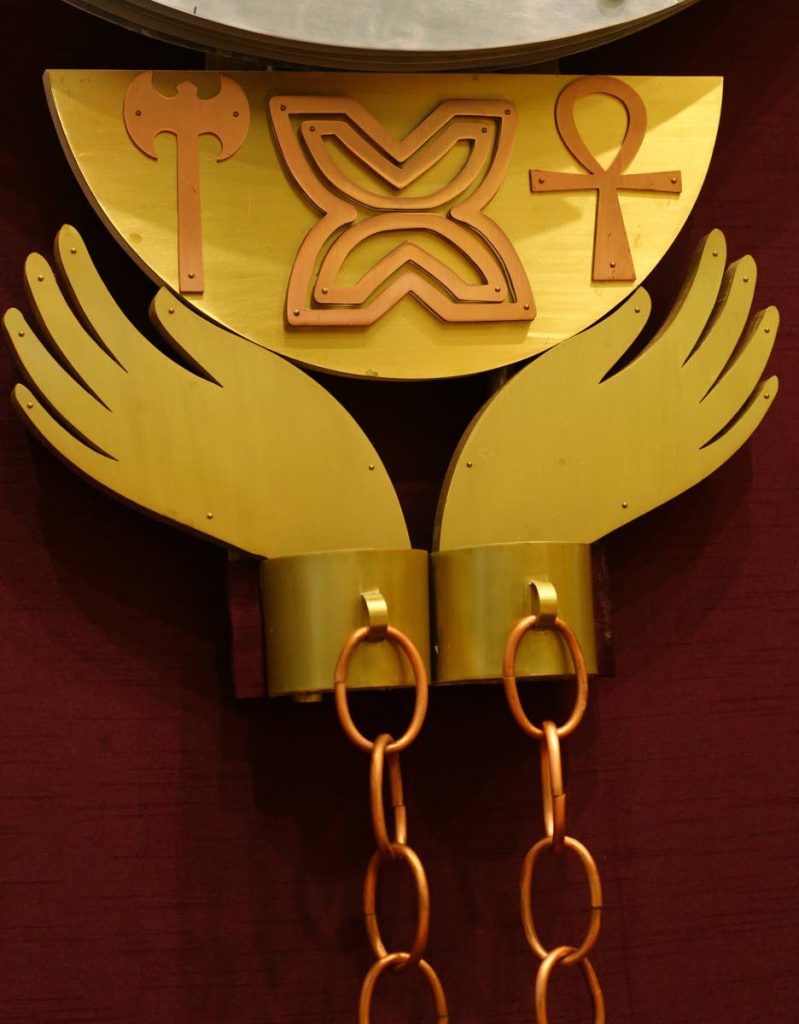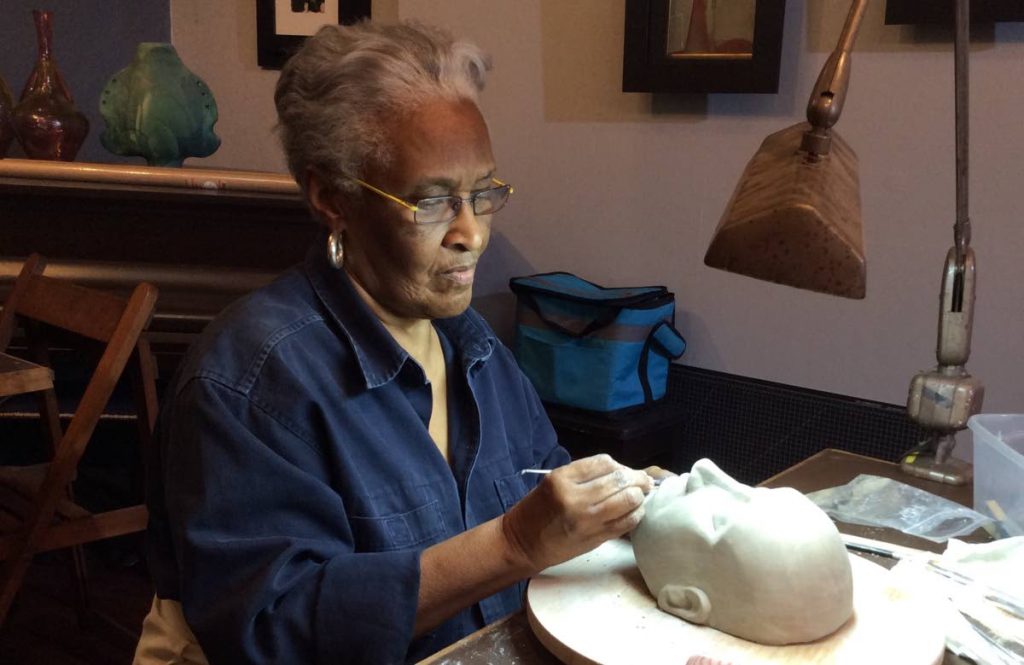Arise, triumph over pain of slavery

Constructed from brass, copper and aluminium, Arise, the Emancipation monument, reflects the hope and aspiration, the memory and triumph of the enslaved.
Designer and creator, Gillian Bishop said when she was commissioned to build the monument by the Emancipation Support Committee of TT (ESCTT) she did not want to portray an enslaved person.
“If you’ve been set free, you are free to return to your homeland if you want to. It means the end of the misery and I did not want to make a monument to the misery. It’s the same way I don’t see people dressed up in old slave clothes in Emancipation celebrations. Everybody is dressed in their finest.”
After that was decided, and after much research, everything else fell into place.
The monument was unveiled by Prime Minister Dr Keith Rowley on Emancipation Day, August 1, after a ceremony in front of the Treasury Building on Independence Square.
The elements and symbolism of the piece are many and is explained in the artist’s statement:
“It explores the term Arise, set in motion by the broken chains and hands that lift the African knowledge systems and spiritual traditions that lead to Freedom and Emancipation, to remembrance of the dark waves of the Middle Passage, the survival of the traffic in human beings, resistance and revolution against enslavement of African peoples."

"The sculpted head, a symbol of African, African descended, and Afro-Creole peoples occupies the focal centre of the sculpture. It is the symbol of the centrality of African humanity in the discussion of freedom and society. It faces forward, focussed and rises on the centre pole, the line of ascent that connects the reading of the Emancipation Proclamation in 1834 to the aspirations represented in the symbolic spear points of Freedom, Dignity, Courage, Resilience.
The vertical system by which the heraldry is devised shows the significance of African survival as cultural resource, and the pride of new creations. It positions the steelpan, the national instrument of TT, as having direct lineage to the West African symbols of Transformation, Energy, Universality and the Supremacy of the Divine.”
Bishop said the monument was built with solid metal and built to last. It required a lot of thinking and she second-guessed many of her decisions. However, she did not have time to be nervous about creating a national monument and instead focussed on what needed to be done.
“I was concerned about how the man in the street would take it because at the end of the day he is the client. Not the people who tell you to do it but the person who looks at it and sees something in it that he’s happy with.”

She added that while only about eight people worked on the monument directly, she consulted with several others whose opinions she valued including painter Ken Crichlow, historian Valerie Taylor, and writer Barbra Jenkins. They gave advice and acted as sounding boards to help her ensure the symbolism was correct.
“The facts of the emancipation itself struck me. I did a lot of reading of Yoruba and Adinkra symbols. They have particular meanings. That governs how I feel about doing work like this – it must strike a chord with people so that they can identify with it. Even if, as in the case of TT, the average person doesn’t know the meaning.”
Zakiya Uzoma-Wadada, executive chair of the ESCTT, told Sunday Newsday it was important that people’s physical space be reflective of themselves and their history through symbols and other kinds of imagery that allowed people to connect with themselves.
“At this time a lot of the symbolism in TT dates back to our colonial history and the manifestation of that history did not include the experiences of the Africans in the society at that time.”
What was used was the names and images of people the “colonial masters” revered and whose legacies they wanted to ensure was carried on.
“We are concerned that our spaces should have passed that era. We are not only independent but we are a republic and we have to begin to transform that space to represent the history of those who live here, and those who we think should be revered.”

She explained that the Treasury Building is in the location of what was the Government House where governor George Hill proclaimed emancipation on August 1, 1834.
She said most of TT society did not know that aspect of the country’s history and they did not understand that the proclamation of emancipation was not just a triumph for African people but for TT’s society, and for humanity. Therefore, the site should be marked with a monument that emphasised liberation rather than enslavement.
“It’s saying that we have to remember our history. We have to remember the greatness of our past and that we were not just enslaved persons. Our liberation is an opportunity to re-embrace our culture, to get to know who we are, understand ourselves and our place in the world, our world view, our understanding of our spirituality, etc. And so the spears show, not only that ascension, that upliftment, but also to understand that as we arise, that struggle for full and total liberation continues.”
Uzoma-Wadada said the ESCTT had been advocating for such changes – to rename some streets, squares and other public spaces – for years, not only to people of African descent, but to anyone that people in society should hold in high esteem or think of as role models.
She said spaces should be renamed after prominent Trinidadians who made contributions internationally towards the development of people. In this way others may become curious and learn their history.
The monument is expected to be mounted six feet off the ground in front of the Treasury Building. The ESCTT has to work with the city engineer at the Port of Spain City Corporation for a platform to be constructed and anchored in the sidewalk in front of the building. In the meantime, Arise is being housed at the Central Bank on Independence Square in the capital.


Comments
"Arise, triumph over pain of slavery"